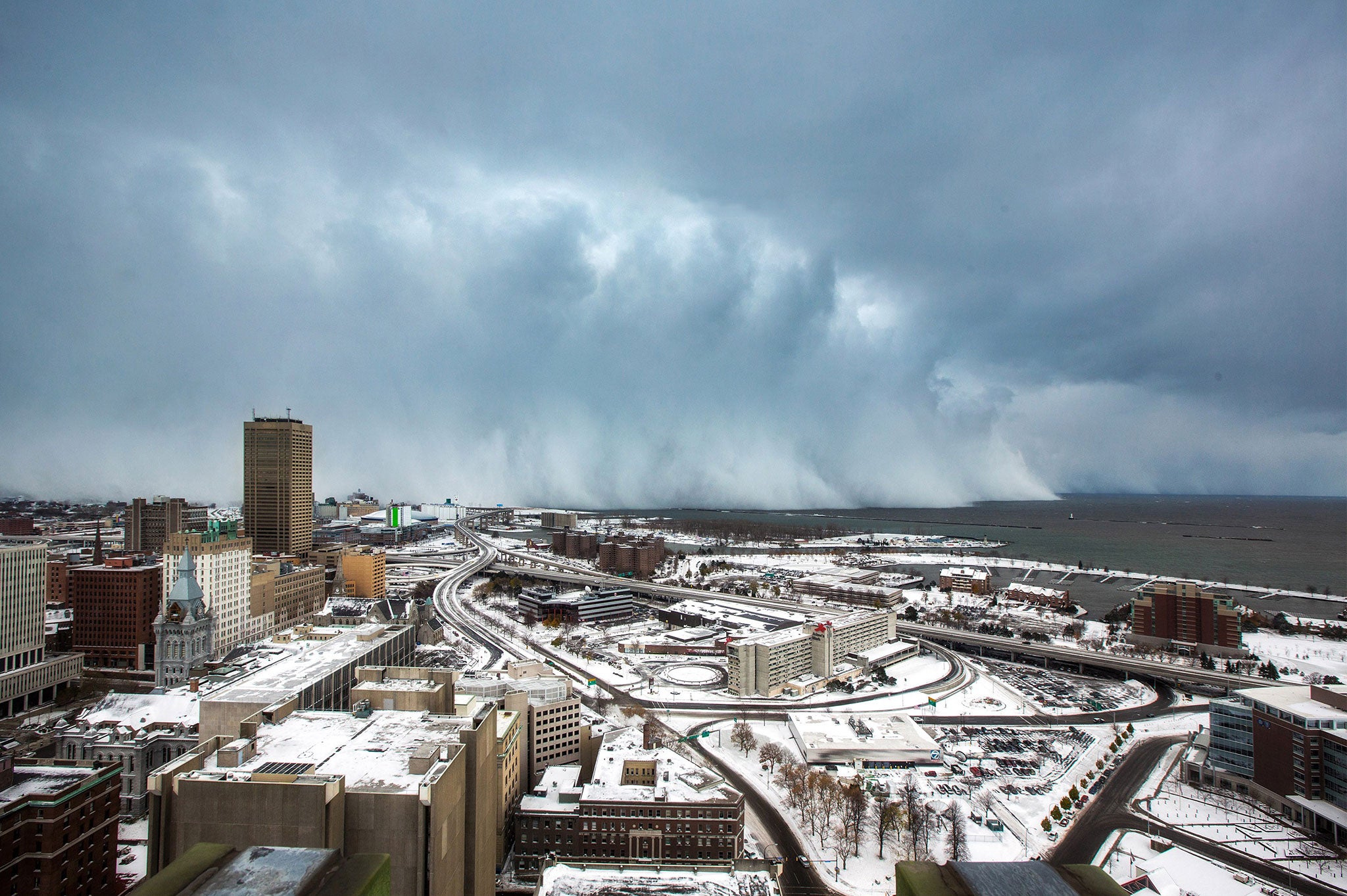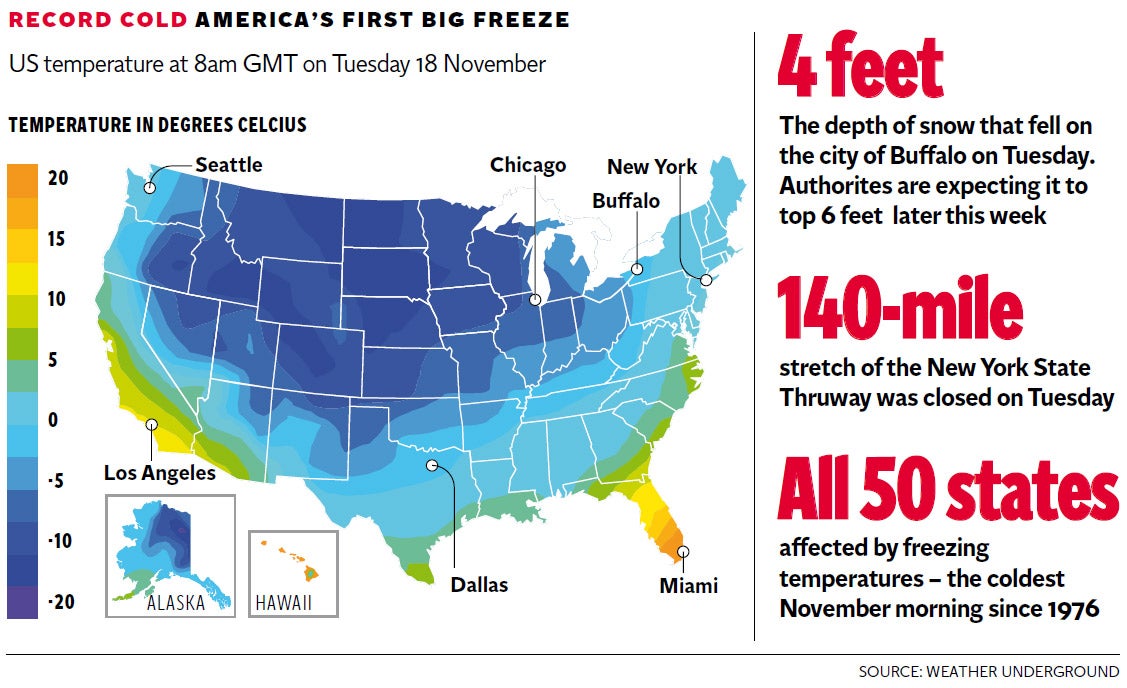New York snowstorm: State officials says things 'will only get worse' as more snow and floods forecast to 'historic' bad weather
Blizzards sweeping across the US have already claimed eight lives

Your support helps us to tell the story
From reproductive rights to climate change to Big Tech, The Independent is on the ground when the story is developing. Whether it's investigating the financials of Elon Musk's pro-Trump PAC or producing our latest documentary, 'The A Word', which shines a light on the American women fighting for reproductive rights, we know how important it is to parse out the facts from the messaging.
At such a critical moment in US history, we need reporters on the ground. Your donation allows us to keep sending journalists to speak to both sides of the story.
The Independent is trusted by Americans across the entire political spectrum. And unlike many other quality news outlets, we choose not to lock Americans out of our reporting and analysis with paywalls. We believe quality journalism should be available to everyone, paid for by those who can afford it.
Your support makes all the difference.New York state residents, still clearing up after the historic “lake-effect” snowstorm that has now claimed eight lives in three days, have been warned that things are only going to get worse.
Another wave of stormy weather is forecast to sweep across the city of Buffalo on Thursday, bringing the total snowfall this week up to levels normally expected over an entire year.
The new fall will undermine the efforts of many who started digging out of their homes on Wednesday, and another three feet (1 metre) of snow is forecast.
On top of the 5.5 feet (1.68 metres) already there in some places, it could become the heaviest 24-hour snowfall on record in the mainland, beating the 75.8 inches (192 centimeters), which fell at Silver Lake, Colorado, in 1921.
“This is an historic event,” Governor Andrew Cuomo told reporters last night. “When all is said and done, this snowstorm will break all sorts of records.” He added: “It will get worse before it gets better.”
The human cost of the record snows has been extensive. In addition to the eight deaths now attributed to the storms, some who ventured out onto the roads ended up trapped in their cars for more than 24 hours.
Cuomo said officials had eventually got everyone out, adding that it took so long because a disabled trailer had prevent snow ploughs from removing the fast-falling snow. He also hit out at drivers for choosing to travel on a closed interstate highway.
One woman, Bethany Hojnacki, went into labour at the height of the storm and had to give birth in the Buffalo fire station. Mother and baby were later both taken to hospital in an ambulance.
The Niagara University women's basketball squad was trapped on their team bus for more than 30 hours, and posted pictures to social media showing how they melted snow for drinking water.
The governor said it would take four or five days to clean up from the storm, which came as part of a front of cold weather that, it must be remembered, has affected the entire country to some extent.

All 50 states – including Hawaii – experienced freezing temperatures on Tuesday morning, making it the coldest start to a November day since 1976.
But the snowfall has been so great in Buffalo in particular because of its position on the shores of Lake Erie.
So-called “lake effect” snow forms because water evaporating from the warmer lake reacts with the cold wind sweeping down from the north.
After the storm: Drone footage shows settled snows in West Seneca
If the wind and temperature conditions are just right, forecasters say the effect is like than of a big sponge, sucking huge quantities of warm water up from the lake and then wringing it out in the form of snow as it passes over land.
Buffalo’s position right at the eastern end of the narrow lake makes it susceptible to this phenomenon – but this year has seen a particularly extreme episode.
Join our commenting forum
Join thought-provoking conversations, follow other Independent readers and see their replies
Comments